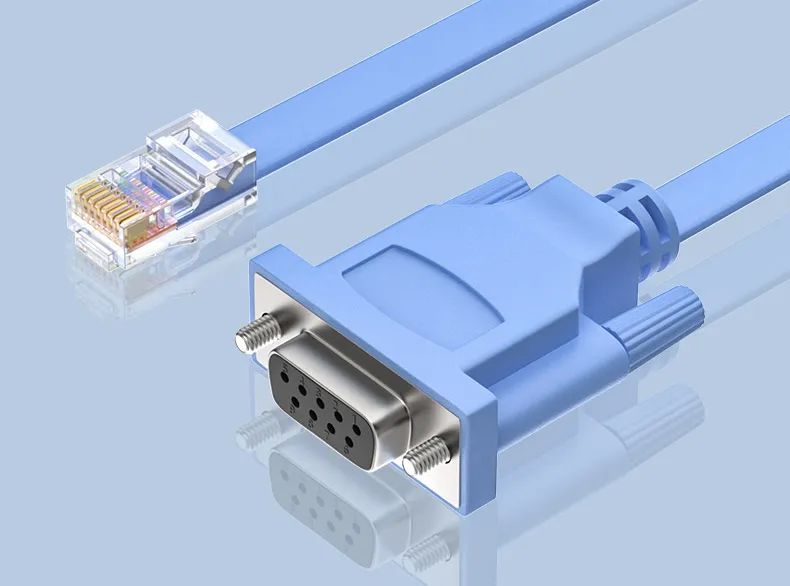Today, common communication equipment basically has two main communication interfaces, Ethernet interface and serial interface. Both Ethernet communication and serial communication belong to wired data transmission, and they each have their own characteristics. This article will compare the two from many aspects to give you a clear understanding of the differences between them.
transfer method
Ethernet is a communications technology widely used in computer networks, typically in local area network (LAN) and wide area network (WAN) environments. Ethernet uses parallel transmission, which means multiple bits are transmitted simultaneously over the communication link. Usually, Ethernet uses multiple cables to transmit data, such as the four twisted pairs used in RJ-45 network cables. Each pair of cables transmits one bit, thereby achieving high-speed parallel data transmission. Ethernet usually has a high transmission rate, which can reach multiple gigabits per second (Gbps) or even higher speeds, and is suitable for high-bandwidth applications such as video transmission, large-scale data transmission, etc.

In contrast, serial communication is a communication method that transfers data bit by bit, usually using a single cable to transmit data. Serial communication can use a point-to-point connection, where two devices are directly connected, or a multipoint connection, where multiple devices are connected together through a serial link. Serial communications use a single communications channel to transmit data bit by bit, typically at rates between a few hundred bits per second (bps) and tens of megabits per second (Mbps). Serial communication is often used for shorter distance communication, such as communication between computers and external devices (such as serial interface communication, serial bus communication), sensor networks, embedded systems, etc.
Connection method
Ethernet and serial communications also differ in how they are connected. Ethernet typically uses a star or bus topology, in which all devices are connected to a central network switching device (such as a switch or router). This structure can easily add and delete devices, and can support parallel communication between multiple devices. Serial communication can use a point-to-point connection, where two devices are directly connected, or a multipoint connection, where multiple devices are connected together through a serial link. This connection method can implement a simple communication link, but usually requires additional protocols and logic to manage the communication nodes and data flow direction.
protocols and standards
Ethernet and serial communications also differ in protocols and standards. Ethernet usually follows Ethernet protocols and standards, such as the IEEE 802.3 series of standards. These standards specify the specifications of the physical layer and data link layer of Ethernet, including transmission media, frame format, MAC address, etc. Ethernet protocols and standards are widely used around the world. From LAN to WAN, from wired to wireless, there are corresponding Ethernet standards and protocols. Serial communication can use a variety of different protocols and standards, such as RS-232, RS-485, UART, etc. These protocols and standards specify the electrical characteristics, data format, error detection and correction of serial communication, etc.
Transmission distance
Ethernet and serial communications also have slightly different transmission distances. Ethernet is usually suitable for local area networks and wide area networks, and its transmission distance can range from tens of meters to tens of kilometers, with a large transmission range. Serial communication is usually suitable for short-distance communication, and its transmission distance is usually limited by the electrical characteristics and transmission medium, generally ranging from a few meters to tens of meters.
Scenari di applicazione
Ethernet and serial communications also have slightly different application scenarios and uses. Ethernet is usually used in local area networks and wide area networks, and is widely used in enterprises, schools, homes and other environments to connect computers, servers, routers, switches, wireless access points and other network devices to achieve Internet connections and data transmission. Serial communication is widely used in embedded systems, sensor networks, automation control, industrial communications, power systems and other fields to connect sensors, actuators, controllers, PLC and other equipment to achieve data transmission and communication between devices. control.
Riassumere
There are differences between Ethernet communication and serial communication in terms of transmission methods, connection methods, protocols and standards, transmission distance, application scenarios, etc. Ethernet is usually used in LAN and WAN environments. It uses parallel transmission and has a high transmission rate. The connection method can be star or bus type. It follows Ethernet protocols and standards and is suitable for a wide range of Internet connections. Serial communication is usually used for short-distance communication. It uses serial transmission mode and has a low transmission rate. The connection method can be point-to-point or multi-point, using different protocols and standards. It is suitable for embedded systems, sensor networks, automation control, etc. Domain-specific communication needs.